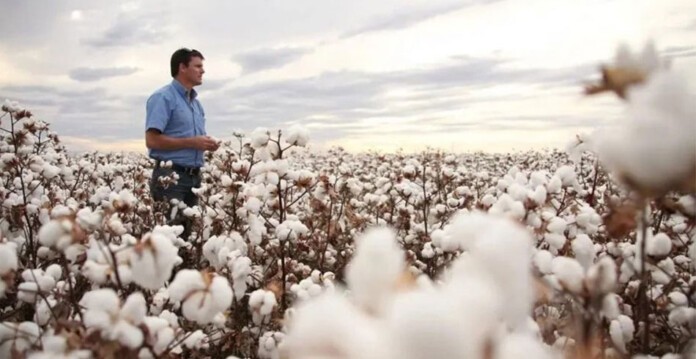Hiringa Energy and Sundown Pastoral Co have been awarded $35.8 million from the New South Wales Government to support a green hydrogen and ammonia facility designed to slash carbon emissions from fuel and fertiliser at Sundown’s ‘Good Earth‘ cotton farm near Moree.
The Good Earth Green Hydrogen and Ammonia (GEGHA) project combines renewable energy production, hydrogen production from water rather than fossil fuels, and ammonia production.
The plan is to install a 27MW solar farm producing roughly 45,000MWh of energy per year to power an electrolysis process whereby rainwater collected on the farm will be split into hydrogen and oxygen. The hydrogen will then be used for onsite ammonia production and to power hydrogen fuel cells (rather than diesel) that pump irrigation water throughout the farm.
Related article: Origin to build Australia’s biggest hydrogen electrolyser
The project is designed to demonstrate the commercial viability of low-carbon fertiliser production, and will be followed by medium-scale expansion across the state’s agricultural sector.
Solar power generates electricity to split water into oxygen and hydrogen via electrolysis
Hydrogen and nitrogen are required for ammonia-based fertilisers, which generate huge quantities of greenhouse gases both from their production and application. Significant efforts are therefore being devoted to reducing their environmental impact, with strategies ranging from re-tooling the DNA of bacteria in the soil so plants can more effectively convert nitrogen from the air into food, to replacing the energy-intensive Haber-Bosch ammonia production process.
Typically, nitrogen is sourced via air separation while hydrogen is produced from natural gas (methane) through a carbon intensive process called steam methane reforming. Nitrogen and hydrogen are then mixed together under high pressure and temperature in the presence of an iron-based catalyst to form ammonia via the Haber Bosch process.
“Our processes are the same in the back end,” Hiringa’s executive director Australia David Heard said.
“But the source of our hydrogen [water separated into its constituent parts via electrolysis, powered by solar] is not carbon intensive. But what’s also quite different here is that typically those [ammonia production] plants are very large, and often located in a major industrial area on the coast and connected to the international markets through shipping.
Related article: Australia joins new International Hydrogen Trade Forum
“What we’re looking at here is a small- to medium-scale version of that located close to a renewable energy source that’s close to the farmers that are using the ammonia as fertiliser. While that means there are fewer economies of scale, there’s some significant advantages in terms of the avoided cost of moving around ammonia.”
The GEGHA project will both improve the reliability of fertiliser supply to local farms while decarbonising it by manufacturing close to the point of use, eliminating the carbon-intensive use of methane as a feedstock for hydrogen production, and using renewable energy to drive the process, claimed Heard.
“This project will result in direct abatement of over 17,000t CO2 equivalent per year, in addition to substantial indirect abatement and safety benefits associated with reduced shipping and heavy vehicle emissions required to transport fertiliser and diesel,” he said.







